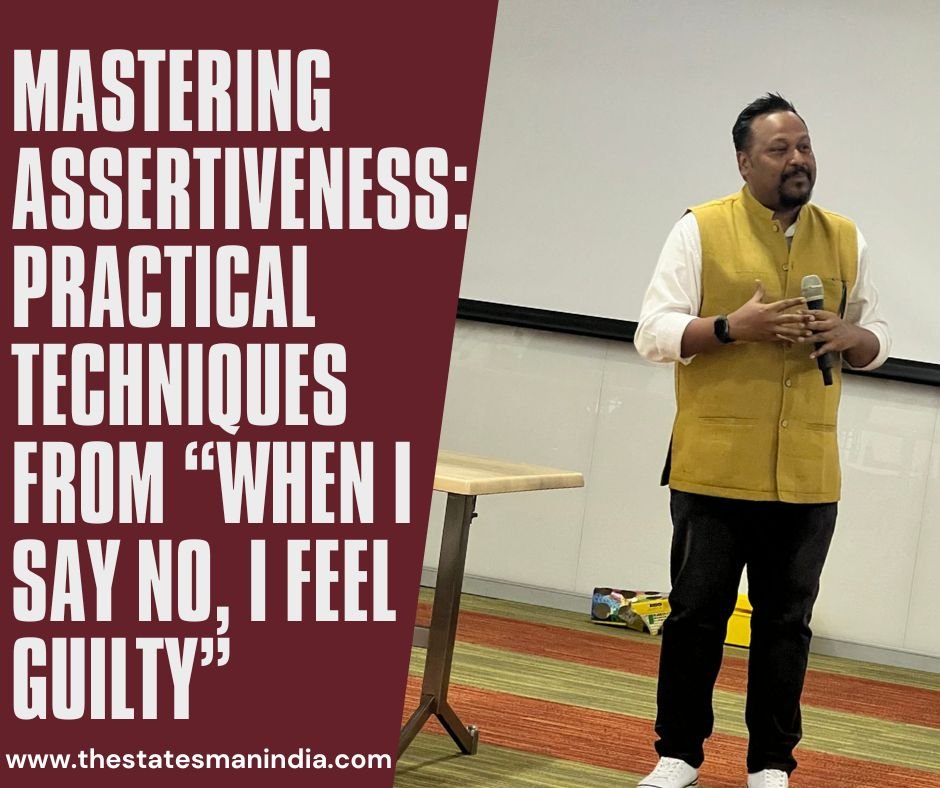Mastering Assertiveness: Practical Techniques from When I Say No, I Feel Guilty

Mastering Assertiveness: Practical Techniques from When I Say No, I Feel Guilty In the ever-evolving landscape of communication, the art of assertiveness stands as a beacon of effective self-expression and collaboration. Manuel J. Smith’s illuminating work, “When I Say No, I Feel Guilty,” unveils actionable techniques that refine our assertiveness skills, enabling us to navigate professional and personal interactions with finesse and confidence.
- “Broken Record” Technique: Smith introduces the “Broken Record” technique as a powerful tool for asserting oneself with clarity and persistence. This technique involves calmly but consistently restating your point or boundary, refusing to engage in manipulative or distracting arguments. For instance, when met with resistance, you could calmly repeat your position: “I appreciate your perspective, and my decision stands.”
- Fogging: Fogging is a strategic approach to handling criticism or aggression without becoming defensive. By acknowledging some truth in the other person’s statement without conceding your position entirely, you can diffuse tension and maintain your assertiveness. For example, when faced with unwarranted criticism, you could respond with, “I understand your concern, and I’m open to discussing ways to improve.”
- Negative Assertion: Negative assertion involves acknowledging negative feedback or demands without internalizing or overreacting to them. By calmly recognizing the other person’s point while firmly standing your ground, you demonstrate emotional maturity and resilience. For instance, if faced with unfair blame, you could respond assertively: “I hear your perspective, but I respectfully disagree with the assessment.”
- Workable Compromise: Smith emphasizes the importance of seeking workable solutions that honor your needs while considering others’ perspectives. Assertively negotiating compromises that uphold your values and priorities fosters win-win outcomes and nurtures constructive relationships. For example, in a collaborative project, you could propose a compromise that addresses both parties’ concerns: “Let’s find a middle ground that leverages both our strengths to achieve our shared goal.”
- Disarming Technique: The disarming technique involves disarming potential aggressors by acknowledging the validity of their emotions or perspectives, even when you disagree with their stance. By empathizing with their position while standing firm in your own, you can de-escalate conflicts and promote constructive dialogue. For instance, in a heated discussion, you could respond empathetically before asserting your viewpoint: “I understand why you feel that way, and I’d like to share my perspective as well.”
By integrating these proven techniques into your assertiveness repertoire, you can cultivate a powerful communication style that blends confidence, empathy, and resilience. Remember, assertiveness is not about overpowering others but about authentically representing your needs and values while respecting the diverse experiences of those around you.
Embrace the wisdom of “When I Say No, I Feel Guilty” as you navigate the intricacies of assertiveness in your professional and personal interactions. Practice these techniques consistently, refine your communication skills, and witness the transformative impact they have on your relationships and success.
In the realm of assertiveness, mastery awaits those who bravely advocate for themselves with tact, grace, and unwavering resolve.
The author Sumesh Khatua is a Learning and Talent Management Leader with over 18 years of experience working with different MNC’s. His insights are always crisp and hits the mark with a quotient of relativity. You can follow him on LinkedIn and engage in meaningful conversations.
(Views expressed are personal and do not reflect the official position or policy of The Statesman India.)


